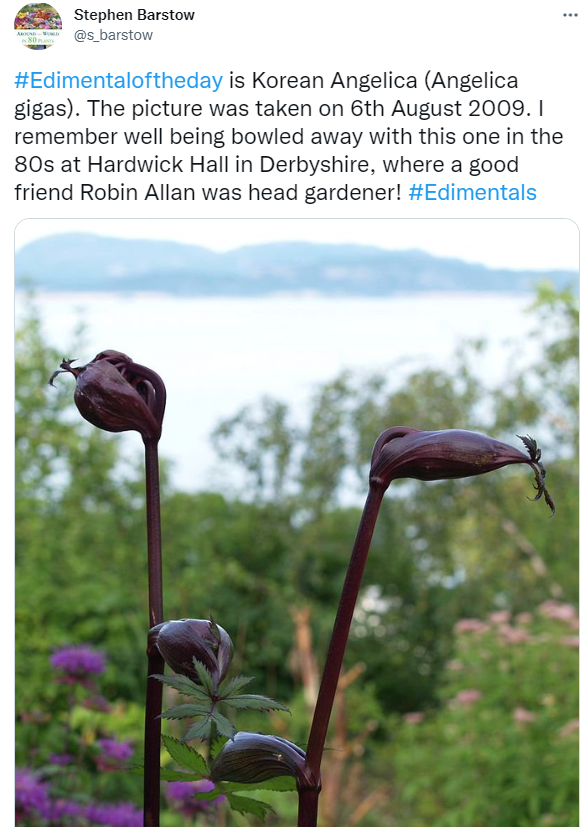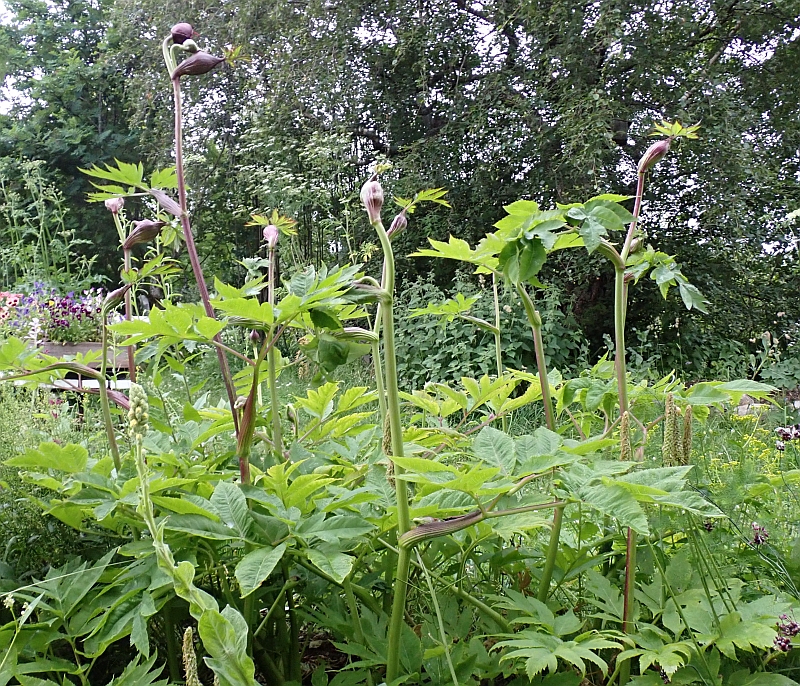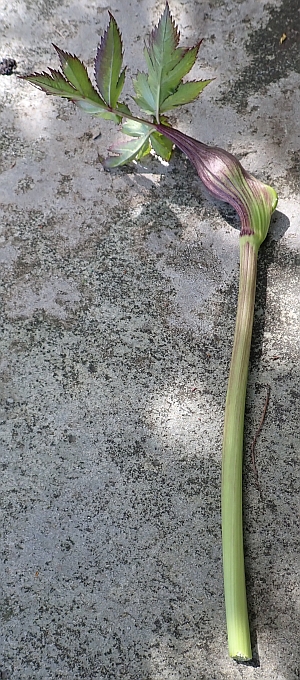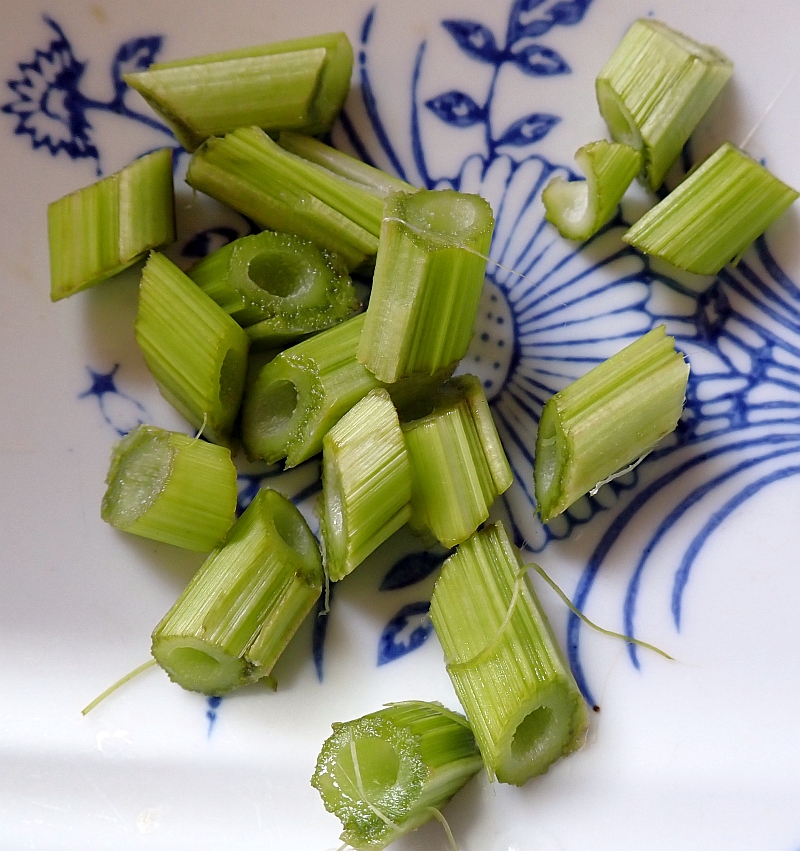Somebody asked me a few days ago if one could eat Angelica gigas (Korean Angelica) as you can Angelica archangelica (see my book Around the World in 80 plants for more about that). In my book, I do mention gigas as one of several other Angelica species used in other parts of the world, but until yesterday I hadn’t eaten it myself, partly as I¨’ve never had many plants and the flowering is wonderful!!
On the Korean wiki page, it simply states that “dangwi / dangquai’s petioles and tender stems are eaten raw or seasoned with herbs”. The root is also used medicinally along with Angelica acutiloba and Angelica sinensis.
You can find various instructional videos and recipes on Korean pages by searching
For example, the spring leaves and petioles are boiled and served with onions, garlic, sesame oil and sesame seeds.
As my plants were close to flowering (they darken quickly to deep red at this stage), I decided to go for using the flower stems in salad: I first took one of the thicker flower stems…
I first took one of the thicker flower stems… ….and sliced off a bit at the base for a taste! I was taken aback by how sweet it was (flower stems of Angelica archangelica were in the past considered to be candy by Norwegians). This reminded me of other plants that have surprisingly sweet flower stems: Scorzonera hispanica (scorzonera / scorsonnerot) and Arctium (burdock / borre). I assume that as plants like these approach flowering they produce less insect repellent chemicals and transfer their energy to producing flowers and seeds. For the salad, I peeled off the outer layer as it is fibrous and sliced it into the salad. Young seed pods of sea kale / strandkål were also available as were Scorzonera flower stems and buds.
….and sliced off a bit at the base for a taste! I was taken aback by how sweet it was (flower stems of Angelica archangelica were in the past considered to be candy by Norwegians). This reminded me of other plants that have surprisingly sweet flower stems: Scorzonera hispanica (scorzonera / scorsonnerot) and Arctium (burdock / borre). I assume that as plants like these approach flowering they produce less insect repellent chemicals and transfer their energy to producing flowers and seeds. For the salad, I peeled off the outer layer as it is fibrous and sliced it into the salad. Young seed pods of sea kale / strandkål were also available as were Scorzonera flower stems and buds.

As with most Apiaceae, Angelica gigas is very popular with the pollinators, so this one definitely fits into the Edi-ento-mental category (delicious, ornamental and popular with the pollinators – what more could you wish of a plant!).
Unfortunately, like Angelica archangelica this species dies after flowering.
